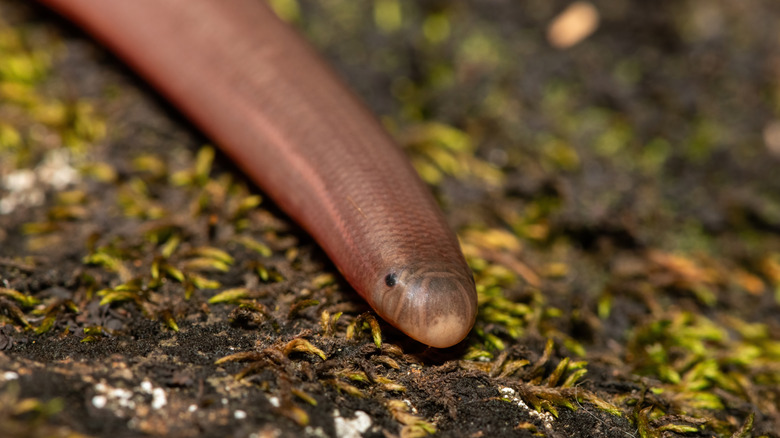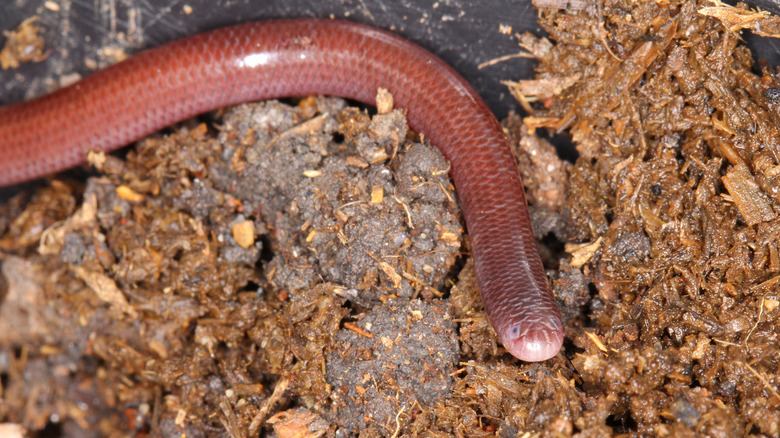No, That's Not A Worm In Your Home - It's A Blind Snake. Here's What To Do
Warm weather can attract all sorts of creatures to your home, including snakes. Since these scaly invaders can harm your family and pets, it makes sense to fear them. But the strangest snake you might find in your home is harmless. It is non-venomous and cannot even pierce the skin of a mammal. This natural oddity is called a blind snake (Scolecophidia), a worm-like reptile that grows to about 3 to 13 inches. They have glossy scales, blunt heads, and small mouths with teeth that are invisible to the naked eye.
Although blind snakes look and behave like worms, this is the result of convergent evolution rather than familial similarity. Like worms, they live underground, but unlike worms, they have tongues for sensing and do not have segmented bodies. The reason for the "blind" moniker is that these snakes have two vestigial eyes covered by translucent scales, so they can only differentiate between light and darkness.
The two most common species of blind snakes in the United States look similar but have curious differences. The first is the western threadsnake (Rena humilis), which is indigenous to the southwestern region of the country. The Brahminy blind snake (Indotyphlops braminus) comes from Southeast Asia and was first reported in Florida in the 1970s. Since then, its range has expanded to several more states, including California, Texas, Louisiana, South Carolina, Massachusetts, and Hawaii. Unlike the western threadsnake, the Brahminy species is entirely made up of females that reproduce asexually. Both species are found under rocks and logs and in loose, damp soil. Watch out for certain plants that can also attract snakes.
How to keep blind snakes out of your home
Snakes are usually a sign that your backyard is healthy, but you probably don't want them in your house. One way blind snakes get inside is through potted plants. This happens when people fill pots with soil from their own yards where a blind snake could be living. Once you bring those pots inside, the snake (or snakes) may get out and seek shelter in areas of your home with low light or high humidity. There are ways to address this issue. The first thing you should do is check your potted plants. If you find any blind snakes, simply take the pot outdoors and remove the creatures. You could also buy your potting soil from the nursery instead of using soil from your yard. Blind snakes can also sneak through cracks and hide under flooring or between walls, so check your foundation and seal any cracks.
Blind snakes eat ants and termites. Their presence in your home could serve as an indicator that you may have an infestation. If you suspect this is the case, you can hire an exterminator to eliminate the pests. If you happen to see a blind snake in your home, simply pick it up and take it outside. They will not harm you, but you can use gloves or a rag if the thought of touching it gives you the willies. If you have issues with other types of snakes in your home, there are several natural ingredients you can use to keep them away.

